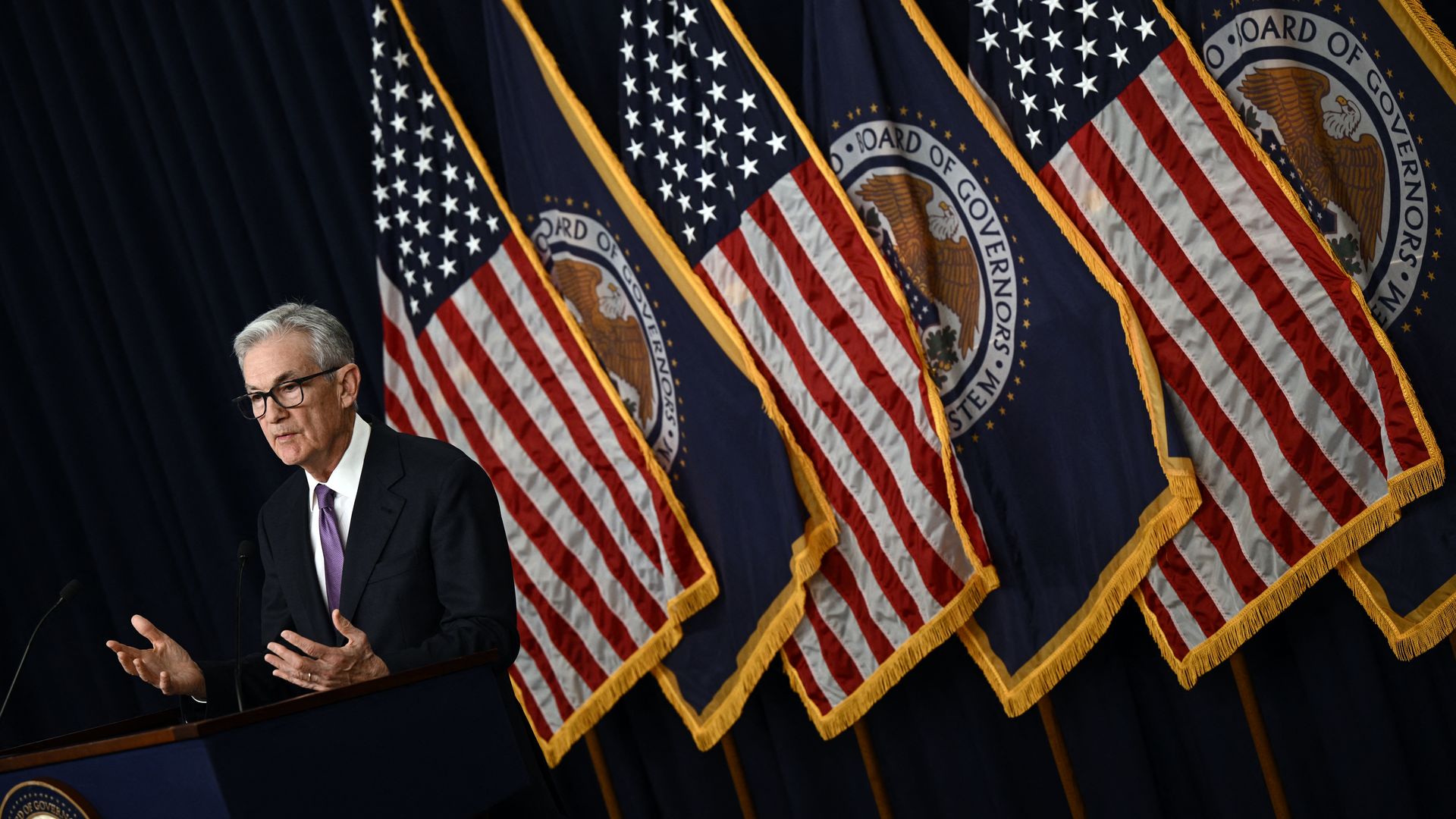What the Fed's rate policy pivot means for the economy

- Neil Irwin, author ofAxios Macro

Fed Chair Jerome Powell at yesterday's news conference. Photo: Brendan Smialowski/AFP via Getty Images
Federal Reserve leaders aren't sure exactly how soon they'll cut rates, or by how much. The details of its playbook are yet to be written. But the broad outlines, revealed yesterday, sure are promising.
Why it matters: The end of the war on inflation is in sight. Barring some unpleasant economic surprises, the central bank is now prepared to take its foot off the brakes and move to a stance in which it is no longer actively trying to slow growth.
- Importantly, the majority of policymakers are now envisioning significant rate cuts in 2024, while also envisioning the economy remaining basically solid, with low unemployment and steady growth.
- In other words, rates will probably be coming down next year even in the absence of a severe downturn. That's a sweet spot both for financial markets and for families and businesses.
- The cycle of monetary tightening that has whipsawed markets and the economy for the last two years is, for all intents and purposes, over.
State of play: The Fed's communications yesterday afternoon leave little doubt about where sentiment among the policymakers lies. The median official anticipates cutting rates by 0.75 percentage points in 2024, and another full point in 2025.
- But the median official also sees 1.4% growth next year, and the unemployment rate edging up only to 4.1% — still quite low by historical standards.
- It is a vision made plausible by a remarkable downshift in inflation since the officials last issued projections in September. The median official sees 2.8% inflation for 2023, down from 3.3% three months ago.
Put together, the Fed has bought into a narrative in which improvements on the supply side of the economy — the fixing of pandemic-disrupted supply chains, surging labor force participation, productivity gains — are doing much of the work bringing inflation back toward the Fed's 2% target.
- The more disinflation comes from supply factors, the less has to come from the Fed engineering demand destruction.
Flashback: It is the inverse of a meeting in November 2021, when the Fed pivoted toward a more hawkish stance, recognizing that inflation was persisting.
- It was four more months before the central bank actually raised its interest rate target, but a shift in its communications started to filter through markets immediately.
- This dovish pivot is achieving the same thing, no matter when rate cuts actually arrive. Rates on two-year U.S. Treasuries are down from 4.73% Tuesday to 4.34% this morning.
Between the lines: Chair Jerome Powell has been reluctant to affirm markets' growing sense that rate cuts are on the way, in part because if financial markets get too overheated, it could stimulate activity and undermine progress on inflation.
- Just two weeks ago, he said it was too soon to early to speculate on rate cuts. But events appear to have overtaken him. As members of the Fed's policy committee penciled in rate cuts in their forecasts, the task now is to figure out the details — the when and how — of monetary easing.
- At this week's meeting, "there was no back and forth, no attempt to sort of reach agreement," on rate cut plans, Powell said in yesterday's news conference. "I would say there's a general expectation that ... this will be a topic for us looking ahead."